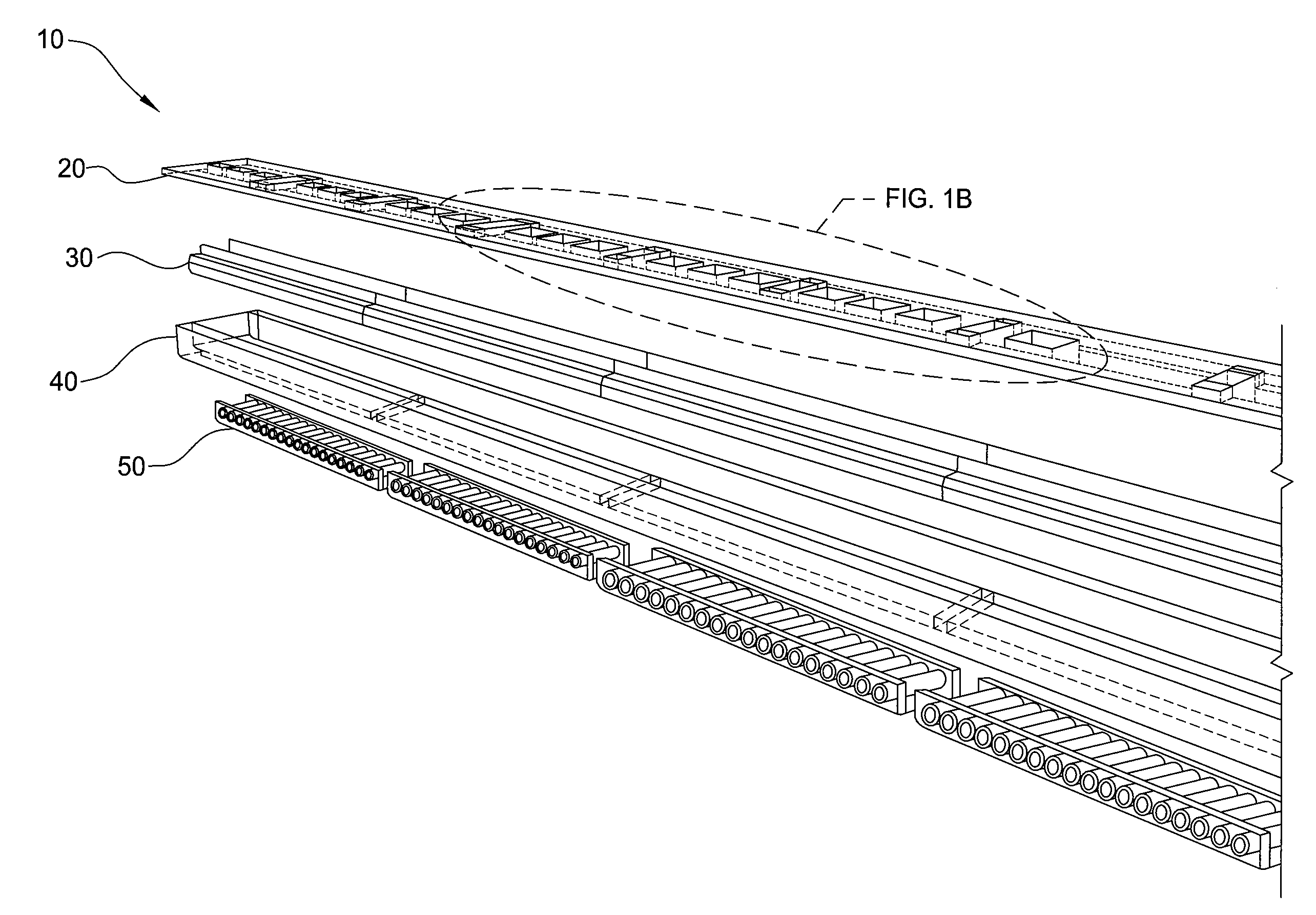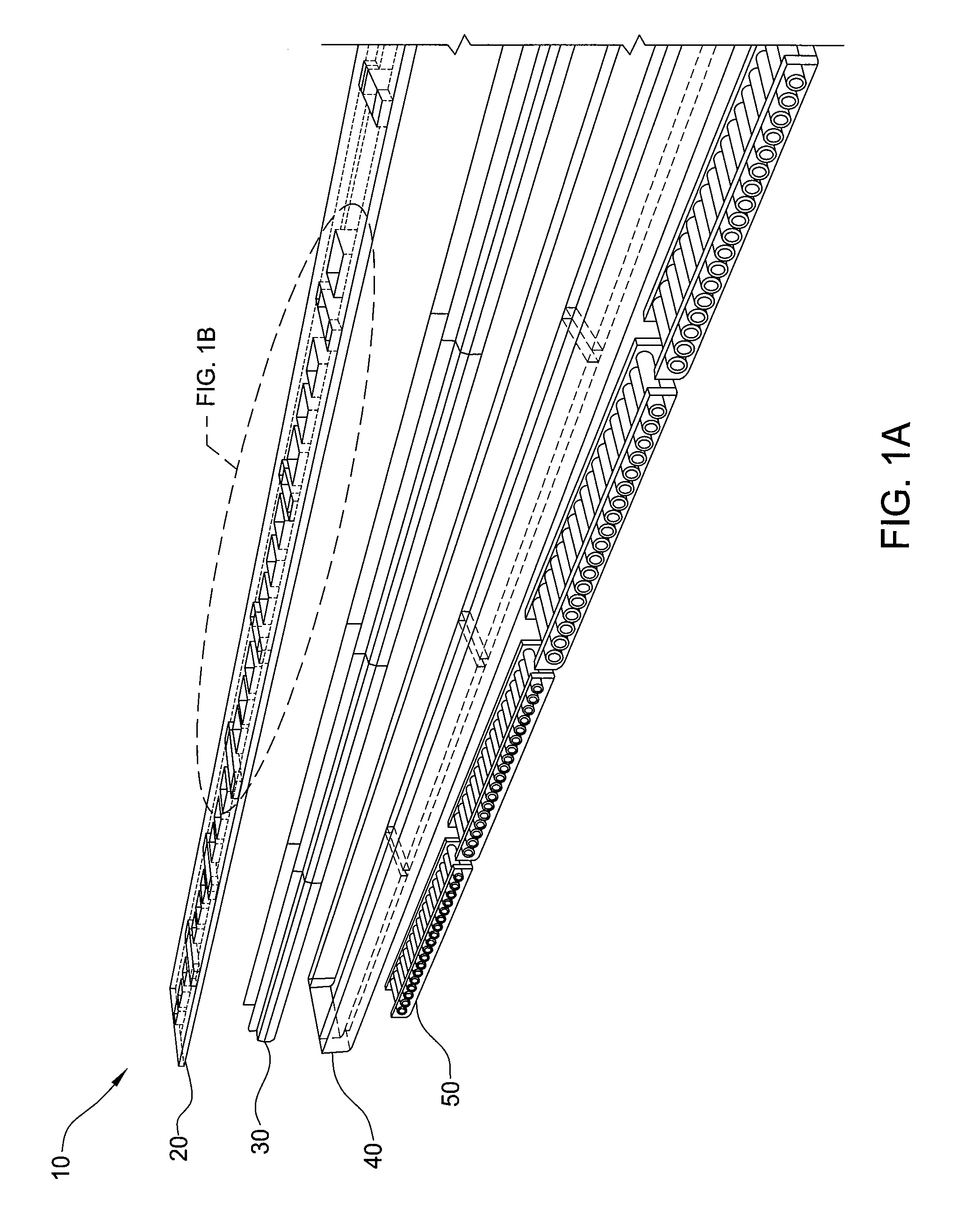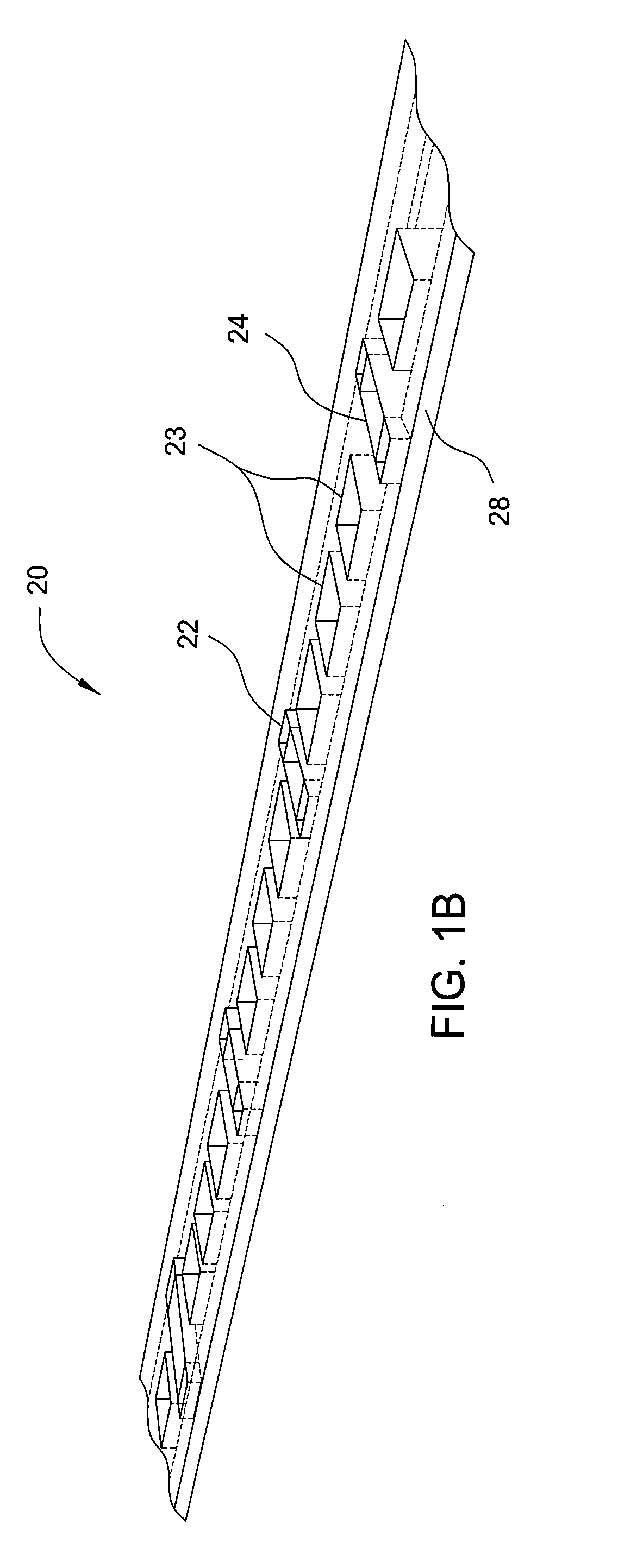Methods and apparatus for a chemical vapor deposition reactor
a technology of chemical vapor deposition and reactor, which is applied in the direction of crystal growth process, polycrystalline material growth, chemically reactive gas growth, etc., to achieve the effect of preventing back diffusion
- Summary
- Abstract
- Description
- Claims
- Application Information
AI Technical Summary
Benefits of technology
Problems solved by technology
Method used
Image
Examples
Embodiment Construction
[0055]Embodiments of the invention generally relate to an apparatus and a method of chemical vapor deposition (“CVD”). As set forth herein, embodiments of the invention is described as they relate to an atmospheric pressure CVD reactor and metal-organic precursor gases. It is to be noted, however, that aspects of the invention are not limited to use with an atmospheric pressure CVD reactor or metal-organic precursor gases, but are applicable to other types of reactor systems and precursor gases. To better understand the novelty of the apparatus of the invention and the methods of use thereof, reference is hereafter made to the accompanying drawings.
[0056]According to one embodiment of the invention, an atmospheric pressure CVD reactor is provided. The CVD reactor may be used to provide multiple epitaxial layers on a substrate, such as a wafer, such as a gallium arsenide wafer. These epitaxial layers may include aluminum gallium arsenide, gallium arsenide, and phosphorous gallium ars...
PUM
| Property | Measurement | Unit |
|---|---|---|
| temperature | aaaaa | aaaaa |
| temperature | aaaaa | aaaaa |
| thickness | aaaaa | aaaaa |
Abstract
Description
Claims
Application Information
 Login to View More
Login to View More - R&D
- Intellectual Property
- Life Sciences
- Materials
- Tech Scout
- Unparalleled Data Quality
- Higher Quality Content
- 60% Fewer Hallucinations
Browse by: Latest US Patents, China's latest patents, Technical Efficacy Thesaurus, Application Domain, Technology Topic, Popular Technical Reports.
© 2025 PatSnap. All rights reserved.Legal|Privacy policy|Modern Slavery Act Transparency Statement|Sitemap|About US| Contact US: help@patsnap.com



